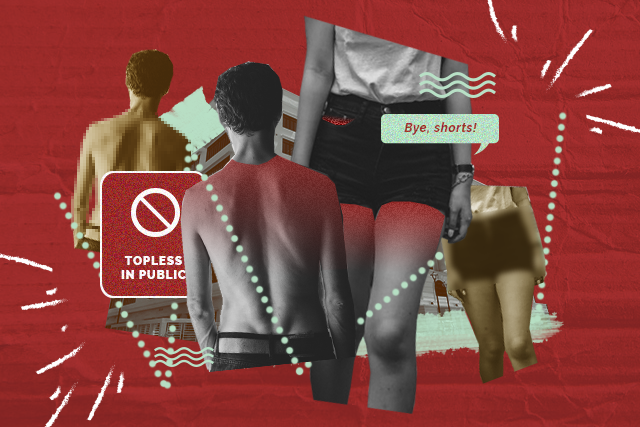
The ordinance that requires residents of Caloocan City to wear covered clothing their when going out in public got people discussing how this fosters victim-blaming rather than keep them safe.
City officials recently implemented City Ordinance 0439 anew prohibiting residents from having no top and wearing skimpy shorts in public.
It states that those caught topless or wearing a certain type of shorts will be given a warning for the first offense and then fined P500 to P1,000 in succeeding times.
This applies to both male and female residents of Caloocan City.
City officials did not mention the purpose for renewing the ordinance.
The ordinance was already in place in 2007 but only those who were topless were monitored and apprehended.
“Hindi naman po namin ipinagbabawal sa barangay namin ‘yung naka-shorts lalo na kung mainit t’saka mas comfortable po kasi dito sa amin mga naka-shorts dahil mga busy,” a barangay official said.
It also gathered mixed reactions on Facebook and Twitter. Those who agreed with the measure perceived that wearing shorts and similar types of dressing invite unwanted attraction.
Others argued that it is a form of misogyny and ineffective in preventing harassment and assault.
I am against Caloocan City Ordinance 0439 a.k.a. 'No Wearing Of Short Shorts' not just because it's summer but primarily because this promotes victim blaming.
Let us, women wear whatever we want, whenever and whereever we want to wear it.
— Mariella Besana (@diploMARSy) March 26, 2019
Some people, however, pointed out there are more pressing problems that the local government of Caloocan should solve first.
Why is the victim’s attire often considered by many as a factor why rape, sexual harassment and assault occur?
While dressing is a form of non-verbal communication, victims should not be held responsible regardless of what they were wearing when such wrongful acts happen to them.
People tend to blame those who underwent unfortunate experiences because of the prevalent “just world bias” perception wherein good things only happen to good people and vice versa, according to an article.
“There’s just this really powerful urge for people to want to think good things happen to good people and where the misperception comes in is that there’s this implied opposite: if something bad has happened to you, you must have done something bad to deserve that bad thing,” said Sherry Hamby, a psychologist.
In terms of clothing, a study from psychologists Carl Jago and Nicholas Christenfeld from the University of California in San Diego also revealed that telling women how to dress and behave properly increases the victim-blaming culture rather than curb rape cases.
The research focuses only on women as most sexual assault prevention programs they observed are centered on female victims.
“Across studies, the various effects on victim blaming were generally accompanied by shifts in perceptions of the victim’s control. Such effects suggest that the risk of emphasising steps the victim can take is that it will shift responsibility from the perpetrator – the one actually responsible for the crime – to the morally blameless victim,” Jago and Chrstenfeld wrote.
Clothes don’t warrant abuse
To challenge the victim-blaming view, groups launched exhibits that display the clothing of rape victims at the time it happened as part of the growing influence of the hashtag #MeToo movement.
The United Nations Population Fund or UNFPA and UN Women’s exhibit brought this concept in the Philippines in 2018 to end gender-based violence in the country.
This was inspired by a similar campaign in Thailand launched by campaign founder Cindy Sirinya Bishop.
The small exhibit has since been moved around malls, government buildings and universities.—Artwork by Uela Altar-Badayos









